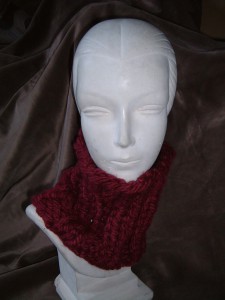Breeze beaters – The Press, September 30th 2009
In the story of knitting, written patterns or recipes as they were originally called, came rather late to the game. Until around 1835 people composed their own recipes and handed them on by word of mouth. Measurements were taken, sizes were calculated, either by percentages or by linear measurement, and garments knitted. Most knitting was not shaped as we expect these days, so things were simpler. If a garment turned out of a size not suitable for its original purpose, then there was always someone in the family it could fit. We don’t have as many children as our ancestors, and good yarn is not cheap, so we have to be a bit more careful to ensure it does not end up on the never to be worn pile.
Today, there are knitting styles and patterns aplenty available in shops and on the internet, but they are still someone else’s recipes. While there is nothing wrong with using other’s recipes, this is intended to draw you in to creating your own, freeing you from the need to use other people’s ideas, allowing your own creative spirit to tip toe out of the shadows and show what it can do. Knitting is essentially made up of just two stitches… plain and purl. Master these two movements and you are at the beginning of a lifelong adventure in fabric. Release yourself from the need to use other’s recipes, then like a creative foodie, you can invent your own, suited to your own taste and style.
Outside the winds are still chilly even though the sun shines and the calendar says Spring. At the change of seasons, it is so easy to catch a chill when caught unawares by fickle weather. Too warm for big scarves, too chilly to go without. I carry a cowl in my bag, just in case there’s a change in the weather.
Whether you want to knit a cowl in soft, big wool using big needles or a dreamy, lacey, full head or shoulder cover in fine yarn, remember to knit a swatch before you begin. Why bother? Because, as well as finding out how many stiches you will need, you will find out how the fabric feels, looks and behaves, whether it will have the ‘look’ you want to achieve. Choose your yarn to suit the look and feel you want to achieve and the colour tosuit your taste. Select the stitch you like, be it stocking stitch, rib, cable or a feathery look. Knit a piece of fabric large enough to get a real feel for what you want. It is better to spend some time before you begin your project to ensure you get the results you want. Remember, the swatch reveals all.
One size does not fit all, measure the area you want to cover. If you want a cowl that fits snuggly round your neck, make sure to measure around your head, above your eyes so you will be able to get it over your head without a struggle. If you want a loosely fitting cowl, measure your head and add extra cm for ease. If you want to make a flat piece that will wrap around the shoulder area, measure around your shoulders, add a few extra cm so you can cross it over to hold it together with either a brooch or a pin.
This is a guidance, not the only way to create a cowl.
The cowl in the picture is knitted in big wool, approximately 14 ply on size 12 needles, using a double rib pattern. Double rib is a four stitch pattern.
Cast on 32 stitches.
Row 1: *Knit 2, Purl 2, continue from * to end of the row
Row 2: *Knit 2, Purl 2, continue from * to end of the row
These two rows form the pattern, so knit as many rows as you want to make your cowl. The cowl in the photo is fifteen rows and required approximately 50 metres of big wool. Stitch the ends together to complete. Pop it on and admire your handiwork.
Because I wanted to join the knitting to make a continuous pattern I used 32 stitches.
If I wanted to make a neck wrap that is not joined, but held together with a brooch or flower pin, I would add two extra stitches so that the edges would both look the same from each side.
When knitting a shoulder wrap, take your measurement, calculate the number of stitches you will require using the 10cm square guage of your swatch, double check your measurements, and knit.
Knitting is not for pussies, it takes time and perseverance to complete a garment, so hang in there, be patient with yourself, swatch swatch swatch, then design, decide, and create your own personal masterpiece.
Knitting is fast becoming the new yoga, a slow craft, a form of relaxation that allows your creative soul to expand.
Knitting is not fast food, it takes time to choose your yarn, design and create, it is slow food for the soul.
Simple guides that you can tart up to your heart’s content.
MBW

